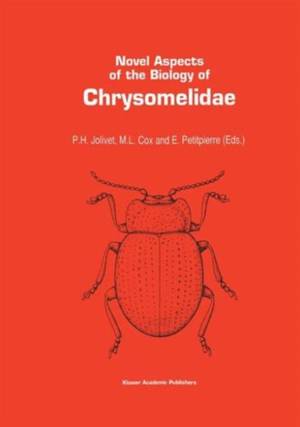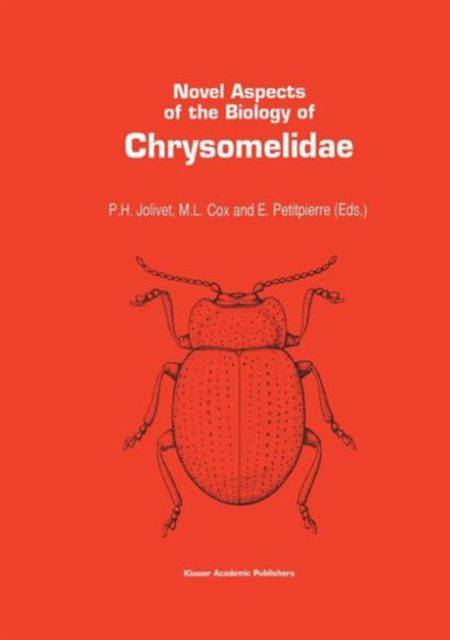
- Afhalen na 1 uur in een winkel met voorraad
- Gratis thuislevering in België vanaf € 30
- Ruim aanbod met 7 miljoen producten
- Afhalen na 1 uur in een winkel met voorraad
- Gratis thuislevering in België vanaf € 30
- Ruim aanbod met 7 miljoen producten
Zoeken
Novel Aspects of the Biology of Chrysomelidae
€ 558,95
+ 1117 punten
Omschrijving
Chrysomelidae, along with Curculionidae and Bruchidae, are the most important phytophagous Coleoptera. At least 37,000 species of leaf beetles belonging to 19 subfamilies have now been described, and more probably remain to be discovered, especially in the tropics. Many species are familiar agricultural pests. The Colorado potato beetle, the cereal beetle, flea beetle and the corn root worms are but a few of the well known pests. Because of the economic importance and biological diversity, chrysomelids are an important taxonomic group for scientific inquiry. This book is divided into eight parts, entitled palaeontology, larvae and larval biology, trophic selection, genetics and evolution defence mechanisms, anatomy and reproduction, pathogens and natural enemies, and general studies in biology. The biologies of agricultural and forestry pests, Leptinotarsa, Plagiodera, Entomoscelis, Paropsis, Mecistomela and Aspidomorpha are dealt with in detail. Others, such as Timarcha and those in the poorly known Megalopodinae, are covered in Part VIII. In this volume the American, European, Asian and Australian fauna occupy the greatest part.This volume, together with Biology of Chrysomelidae (1988), provides a comprehensive coverage and helps to complete the picture of chrysomelid biology.
Specificaties
Betrokkenen
- Uitgeverij:
Inhoud
- Aantal bladzijden:
- 582
- Taal:
- Engels
- Reeks:
- Reeksnummer:
- nr. 50
Eigenschappen
- Productcode (EAN):
- 9780792321859
- Verschijningsdatum:
- 31/12/1993
- Uitvoering:
- Hardcover
- Formaat:
- Genaaid
- Afmetingen:
- 210 mm x 297 mm
- Gewicht:
- 1833 g

Alleen bij Standaard Boekhandel
+ 1117 punten op je klantenkaart van Standaard Boekhandel
Beoordelingen
We publiceren alleen reviews die voldoen aan de voorwaarden voor reviews. Bekijk onze voorwaarden voor reviews.










